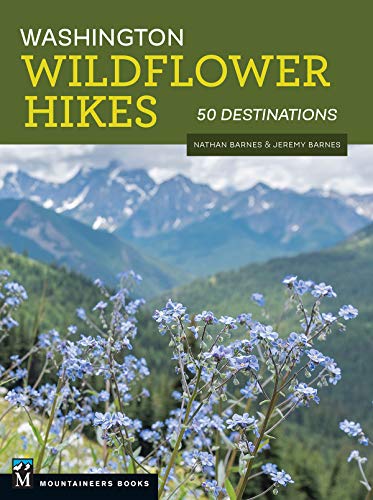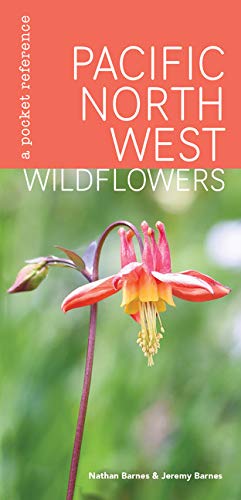Notch Pass Trail #831
Follow this trail-less-traveled as it climbs up rugged mountainsides to a narrow pass shrouded in history.
Total Distance: 4.2 miles
Total Ascent: 1700ft
Highest Point: 2400ft
Total Ascent: 1700ft
Highest Point: 2400ft
Difficulty: Moderate
Our Hiking Time: 2h 15m
Required Permit: None
Our Hiking Time: 2h 15m
Required Permit: None
To get there, take the Bainbridge Island Ferry and follow State Route 305 through Poulsbo to State Route 3. Follow SR 3 to the Hood Canal Bridge, taking a left over the bridge onto State Route 104. Follow SR 104 as it merges onto US 101 and continue 11.3 miles through Quilcene to Penny Creek Road. Take a right and continue 1.4 miles to the Big Quilcene River Road (FR 27). Veer left onto the Big Quilcene River Road (FR 27) and continue for just under a mile to unmarked FR 27-010 on the right. This narrow dirt road is easy to miss; look for a road that connects to the main road in a “Y,” splitting around a small wooden structure. (If you reach the National Forest boundary you have gone too far.) Head right onto FR 27-010 for about a mile to the signed trailhead. View Google Directions >>
The Notch Pass Trail #831 beings steeply from the roadside and climbs steadily up into a young forest of hemlock and fir. Rhododendrons and sword fern are common along the moss-lined trail as it winds steadily upward. The trail is narrow, but not overgrown or rough, helping make the trek a little more pleasant. Before you know it, you’ve put two miles behind you and the trail enters the densely wooded Notch Pass. Mossy logs cover the forest floor here, muffling the usual sounds of the forest and lending a slightly eerie feel to the area. Take some time to look around and enjoy the silence. Continue on for a short distance to emerges from the trees onto a forest road.
For a lot of hikers the top of the Pass is a good place to have a snack and head back down to the car. But if you’re still wanting some time on the trail, the trail does continue, dropping down the backside of Quilcene Ridge -- along the way you’ll cross FR 27 and the alternative trailhead, Allen Creek, Townsend Creek and eventually find yourself exploring areas along the Big Quilcene River.
This is a decent alternative to the busy Mt. Townsend trailhead a few miles down the road, especially if you’ve already tackled Mt. Townsend and are looking for something different. What it lacks in big views, it makes up for in quiet solitude. We recommend this hike for more experienced hikers who are looking for something a little different and do not mind climbing up to Notch Pass twice on a round trip to the Bark Shanty Shelter site and the Big Quilcene River. If you’re looking for a little adventure and a healthy dose of history, give Notch Pass a try.
By the 1880s, farmers and loggers had settled in the area and likely used the route to access the Big Quilcene River valley. Miners found hints of mineral riches near the turn of the century, and by 1903 the Tubal Cain Copper and Manganese Mining Company was formed, drawing more people and resources down the rough trail along the Big Quilcene River. In 1930, the Civilian Conservation Corps (CCC) worked to improve the Big Quilcene River Trail and built shelters such as the Bark Shanty Shelter along the route. At the same time, the CCC also expanded the traditional route over Notch Pass. However, within just a few decades, the trail built by the CCC slowly degraded and was abandoned -- disappearing from USGS maps sometime after 1953. In 1998, a group of trail volunteers led by the Washington Trails Association worked to re-route and rebuild the trail. Since that time at least 67 WTA work parties have worked to maintain the trail. Today the shelters built by the CCC are long gone, but through the dedication of volunteers the trail remains.
For a lot of hikers the top of the Pass is a good place to have a snack and head back down to the car. But if you’re still wanting some time on the trail, the trail does continue, dropping down the backside of Quilcene Ridge -- along the way you’ll cross FR 27 and the alternative trailhead, Allen Creek, Townsend Creek and eventually find yourself exploring areas along the Big Quilcene River.
This is a decent alternative to the busy Mt. Townsend trailhead a few miles down the road, especially if you’ve already tackled Mt. Townsend and are looking for something different. What it lacks in big views, it makes up for in quiet solitude. We recommend this hike for more experienced hikers who are looking for something a little different and do not mind climbing up to Notch Pass twice on a round trip to the Bark Shanty Shelter site and the Big Quilcene River. If you’re looking for a little adventure and a healthy dose of history, give Notch Pass a try.
History
Long before Europeans found their way to the Olympic Peninsula, bands of Native Americans were living in many different areas around the Peninsula, including the entire length of Hood Canal. These groups often needed to trade with one another and reach seasonal foraging areas deeper in the mountains. Over time, a network of trails was built to connect communities and provide easy access to resources. Today’s Notch Pass Trail likely follows a route once taken by Native Americans, leading from the Quilcene area over the Quilcene Range and down to Townsend Creek and the Big Quilcene River.By the 1880s, farmers and loggers had settled in the area and likely used the route to access the Big Quilcene River valley. Miners found hints of mineral riches near the turn of the century, and by 1903 the Tubal Cain Copper and Manganese Mining Company was formed, drawing more people and resources down the rough trail along the Big Quilcene River. In 1930, the Civilian Conservation Corps (CCC) worked to improve the Big Quilcene River Trail and built shelters such as the Bark Shanty Shelter along the route. At the same time, the CCC also expanded the traditional route over Notch Pass. However, within just a few decades, the trail built by the CCC slowly degraded and was abandoned -- disappearing from USGS maps sometime after 1953. In 1998, a group of trail volunteers led by the Washington Trails Association worked to re-route and rebuild the trail. Since that time at least 67 WTA work parties have worked to maintain the trail. Today the shelters built by the CCC are long gone, but through the dedication of volunteers the trail remains.
Nearby hikes
Similar Difficulty
Similar Features












